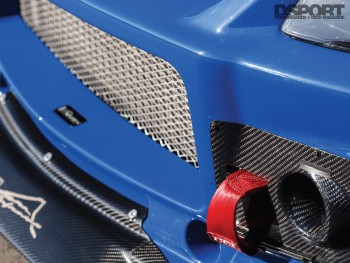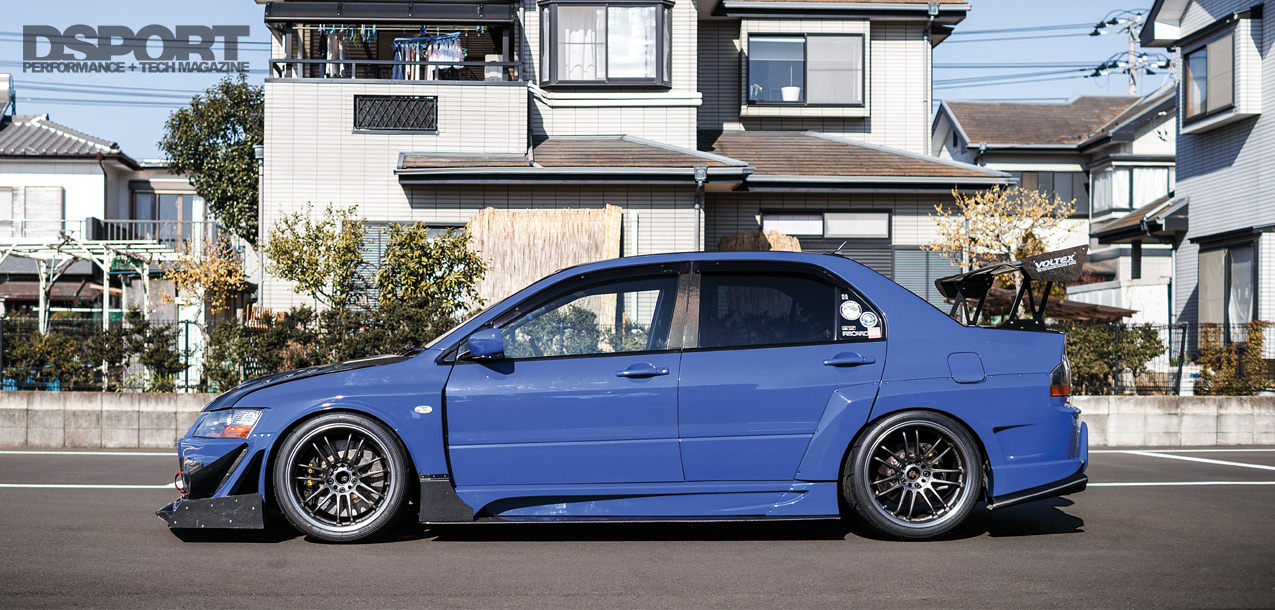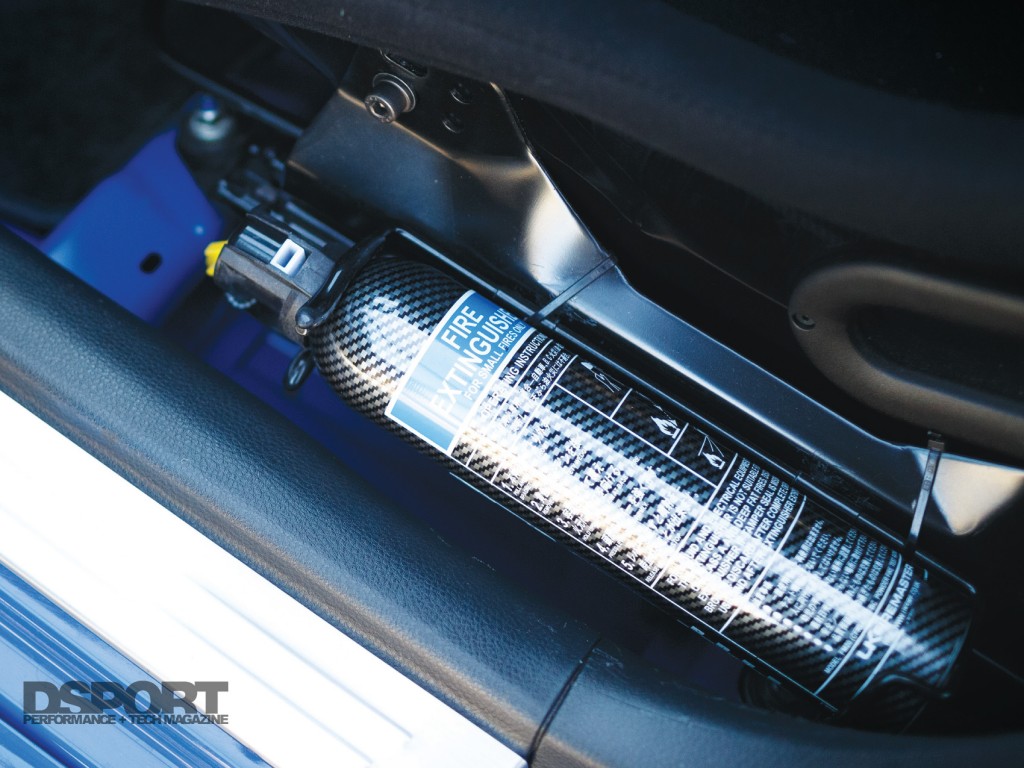Breathe In, Breathe Out
In order to fully utilize the extra displacement and upgraded cams, more air and more fuel are a must. The 4G63 inhales through an HKS Power Flow filter that feeds air into Garage G-Force’s 100mm suction pipe. A T3 framed Garrett GTX3076R turbocharger was selected to pack even more air into the system. The compressed air from the turbo is chilled through an HKS front-mount intercooler that delivers it back to the Hypertune intake manifold. Auto Staff’s Super SR Throttle Body regulates the air filling the plenum of the intake manifold as it enters the motor. To balance out the air/fuel cocktail, two RH9 255 lph in-tank pumps send fuel to the four SARD 900cc/min injectors. Following the “bang” stroke, the spent air finds its way out through an IR exhaust manifold and a complete Garage G-Force exhaust system.
Faster, Stronger
The high torque and horsepower of this EVO VII required a reliable and efficient method of transferring energy to all four driving wheels. Exedy’s Carbon-R series clutch and flywheel helped fulfill this role, utilizing Exedy’s technology from past Formula One racing efforts in a high strength and low mass package. A toughened, WPC treated gearbox delivers the power to all four wheels through a set of Cusco RS 1-way limited slip differentials at the front and rear.
WPC is the treatment process of blasting parts with spherical ceramic and metallic dry lubricant elements at very high speeds. This makes for a very low friction, ultra-hard surface with no side effects. This means less wear, less heat buildup and freer movement.
Slowing Down = Going Fast
 The EVO VII was being built with some extra grunt for straight-line speed, but it would need more than that to be fast around a racetrack. When shooting for low lap times, the ability to slow down in a hurry and carry speed through a corner is every bit as important as high horsepower. Priority then comes down to managing heat and stopping power in the brake components, body roll and weight transfer, and keeping the tires in as much contact with the road as possible. A set of AP Racing 6-piston front and 4-piston rear calipers squeeze the PFC brake pads onto PFC 362mm two-piece rotors to bring the car to a quick halt. The two-piece rotors are a major benefit to the overall braking capabilities, coming in at a lighter weight than single-piece rotors and with improved heat dissipation.
The EVO VII was being built with some extra grunt for straight-line speed, but it would need more than that to be fast around a racetrack. When shooting for low lap times, the ability to slow down in a hurry and carry speed through a corner is every bit as important as high horsepower. Priority then comes down to managing heat and stopping power in the brake components, body roll and weight transfer, and keeping the tires in as much contact with the road as possible. A set of AP Racing 6-piston front and 4-piston rear calipers squeeze the PFC brake pads onto PFC 362mm two-piece rotors to bring the car to a quick halt. The two-piece rotors are a major benefit to the overall braking capabilities, coming in at a lighter weight than single-piece rotors and with improved heat dissipation.
(L) A SARD fuel surge tank mounted between the shock towers ensures uninterrupted fuel delivery while helping to maintain vehicle balance. (M) Four-piston AP Racing brakes and two-piece\ slotted rotors work together to help cut speed. (R) While integrated fire suppression is ideal, an extinguisher within easy reach certainly helps
As the car gets thrown into a turn, the equipped Hyperco Springs and ÖHLINS DFV (Dual Flow Valve) dampers are hard at work to keep the car planted to the ground. The dual flow valve system enables the dampers’ rebound to share the same characteristics as the compression, keeping the tires in constant contact with the road while maintaining a smooth ride. Wrapping the Volk Racing RE30 18×11- inch wheels are a set of Yokohama Advan A050 tires, a purpose-made semi-slick tire designed for hill climbs, road racing sprints, and time attacks.
Shaving weight includes any panel that can be upgraded to something lighter, like the stock trunk lid in exchange for this lightweight Varis carbon-fiber unit instead.
Racing Tested, Family Approved
A after a decade of ownership, it was Ishii-san’s time to show what this family track car was capable of. He entered the FISCO Special Stage Trial series in 2014, taking place at the legendary Fuji Speedway. Host to major Formula One and Can-Am events in the past, this race track challenges drivers and their vehicles with a slew of high speed and low speed corners, elevation changes and a straightaway that stretches to nearly a mile in length. Foot to the floor on the straight sections and muscling the car through the turns, Ishii-san navigated the EVO VII around the circuit in a fast lap time of 1:49.726, earning him the top step on the podium for the time attack series. Ishii-san reached his primary goals with this build, and that’s good enough for him as he has no plans to build it up any further. While it’s a competitive time attack machine, it’s still an air-conditioned five seater that the whole family can comfortably enjoy. That’s a statement that most time attack vehicles simply can’t make.








